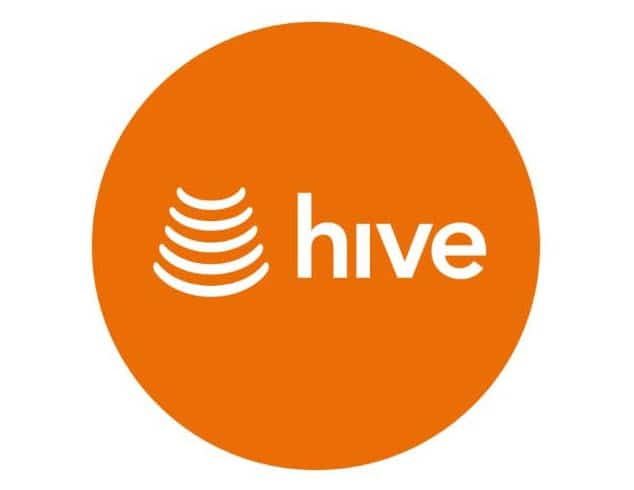It’s undeniable that Microsoft Windows slows down over time. No matter how much sensible housekeeping you do, removing old files and software, defragging and the like – there comes a time when it’s sensible to bite the bullet and start again with a completely fresh re-install.
Here in my office at Tubb Towers, my main Desktop PC is suffering. I’ve been wrestling with a number of niggling issues ranging from dodgy ActiveSync connections with my PDA, to flaky VPN performance to some client sites, to a generally frustrating XP Desktop that performs like a slug struggling through Treacle. I’ve “fixed” each of this issues more than once over the last six months, only for them to crop up again.
Therefore a plan of action was drawn to re-build Windows XP from the ground up, with an attempt to install only the software I actually need, and to use the opportunity to try a few alternatives to my standard wares.
On the subject of wares (or should that be warez…) I also took the opportunity to review the licensing agreements of some of the smaller utilities I use, to make sure they really were “free”. It did turn out that one or two were “free for personal use” – but not for commercial usage, therefore I splashed out for a few licenses where appropriate. However, I was pleasantly surprised to find Freeware or Open Source alternatives to others. More than once recently I’ve found it pays to check out places like SourceForge to see if someone has built the software you want without having to pay for a license.
Back to the re-build. After making sure my backup was upto date (I have good backup habits anyway, experience has taught me well…) I made a list of all the software installed. Everything went into a “keep”, “chuck” or “maybe” (look for alternatives) pile. Then I dug out any media required for the “keep” pile, along with any relevant Serial Numbers or CD-Keys as necessary.
From there the process was a straight-forward wipe and re-install of Windows XP. The most painful part is always having to sit through the endless reboot and Microsoft Update cycle a new machine requires. I took this opportunity to spring clean the office in between clicks…
Once XP was ready, with custom drivers bang upto date and no outstanding patches showing on Microsoft Update – it was onto the software.
Thank goodness for the fact that most software nowadays has “Auto Update” features built-in. No more plodding around Support sections of web-sites – everything is done for you. The one frustrating experience here was with Adobe Acrobat v7. Whilst the Auto Update feature highlighted four updates, v7.05, 06, 07 and 09 – it forced you to download each update individually, install it and then reboot. What’s more, the downloads are sllllllow – this is over a 10mb Cable Modem connection. Any chance of “rolling up” previous updates into your latest patch release Adobe?
Once all the relevant software was installed, it was time to take a Disk Image. The benefits of capturing an image are numerous, but first and foremost – next time Windows grinds to a halt, you can simply backup your work, re-install the O/S from your image inside a few minutes, and voila – nice quick Windows again!
Historically, I’ve always used Symantec Ghost to do my imaging. However recently I’ve been won over by Acronis TrueImage Workstation. Not only does their Universal Restore feature make moving an Image from one type of PC to another (even with different hardware) easy – but installing the software on your own Desktop PC makes taking backups a synch. TrueImage creates a “Secure Area” on a disk (in this case, a spare 120GB HDD I’d put into my PC as secondary Disk) and backs up to that space. If you hose Windows in the future, no problem – press F11 at next reboot and TrueImage pops up allowing you to restore – no bootable media required, no fuss, no mess.
Post-image, I restored all my data and investigated some alternative applications to my standard fare. In this case that involved trying Windows Desktop Search instead of Google Desktop Search, Filezilla instead of SmartFTP, and others besides. I’ll document my findings in the weeks to come.
The whole process has taken the better part of a day – but it’s time well spent when you spend hours each week on a PC that isn’t running at optimum. It’s also a good auditing exercise, plus it opens your eyes to alternatives to your “tried and tested” software set.
Finally – I can predict the flood of catcalls I’ll get for not taking the opportunity to move to Windows Vista – Microsoft’s latest Operation System. However – in my defence I’m already aware of two or three “must have” apps that don’t work under Vista yet, plus this is my hub of operations – if this PC doesn’t work, customers don’t get work done for them, invoices don’t get sent – and that just will not do. Just like I predict the majority of SME’s I work with will, I’ll re-evaluate the situation a few months after Vista’s release – and will move up then. In the meantime, Vista remains confined to the Testbed PC and Virtual PC’s here at Tubb Towers…













Comments
4 thoughts on How to create a Backup Image for Rebuilding Windows XP
MATT
24TH JANUARY 2007 17:41:10
VISTA! ;-)
RICHARD
24TH JANUARY 2007 18:40:28
In my opinion, the concerns I have as a micro business exactly reflect exactly the concerns in much bigger businesses. Will my Mission Critical Applications work under Vista? Why should I upgrade when XP is doing everything I want already?I've been to the EVO Roadshow, attended MS Seminars on Vista, read the White Papers and case studies, and still come to the same conclusion... Vista is going to be most attractive to those users considering upgrading from 9x, NT or 2000. For the XP crowd, and purely from my own experiences speaking to the SME's that Vista is aimed at, the majority are quite happy with 2003 Server/SBS and XP SP2.And this is coming from someone who really likes Vista. ;-)
MIKE
24TH JANUARY 2007 21:28:26
Hi Rich, we'll - you've correctly identified Microsoft's biggest competitor to Windows Vista. Not Unix, not Mac, not even Linux. The biggest competitor is Windows Xp SP2. As you say, it works, does what you think you need and is pretty reliable. However, Vista will provide you capabilities that go beyond Xp and maybe that you don't realise that you could use to your advantage. I could go into proper sales mode and start doing my demos and presentations at this point but will save that for another time :). By the way - as you are talking about imaging software, Vista ships with a new imaging solution called a WIm (Windows Image). It's more efficient than Ghost and best of all - it's free! What's more, you can inject updates into it without the need to reimage so no more reimaging then applying all the updates (Service packs, security fixes etc) afterwards. Just keep the WIm up to date as you patch the pc (and of course we hope there'll be less patches and SPs to update too). Just been looking at Sky News (we get the UK Sky News on Foxtel from 5.30-6.00am over here) and checked out that lovely weather your having. It's 26C and sunny (again) here today. Jealous yet??????? Back to a cold Blighty at the end of March. Would be good if we could catch up for a beer whilst I'm back. Mike
RICHARD
26TH JANUARY 2007 08:43:50
Hi Mike - good to hear from you! Would be great to see you for a beer in March!Took my first look at WIM a couple of months ago. I've always been a massive fan of Image based deployments - but in the SME area, a solution such as a Ghost Server can add a significant cost initially, plus an increased cost of £10-£20 per PC ongoing in license costs. So WIM looks really good - and probably long overdue for deploying anything other than a few PC's at a time.PC Pro has a good small article on Vista uptake. It basically confirms what we've discussed - that most businesses will hold off for a while until Applications and Drivers from 3rd parties "catch up".http://www.pcpro.co.uk/news/103080/mixed-expectations-for-vista-launch-analysts.html